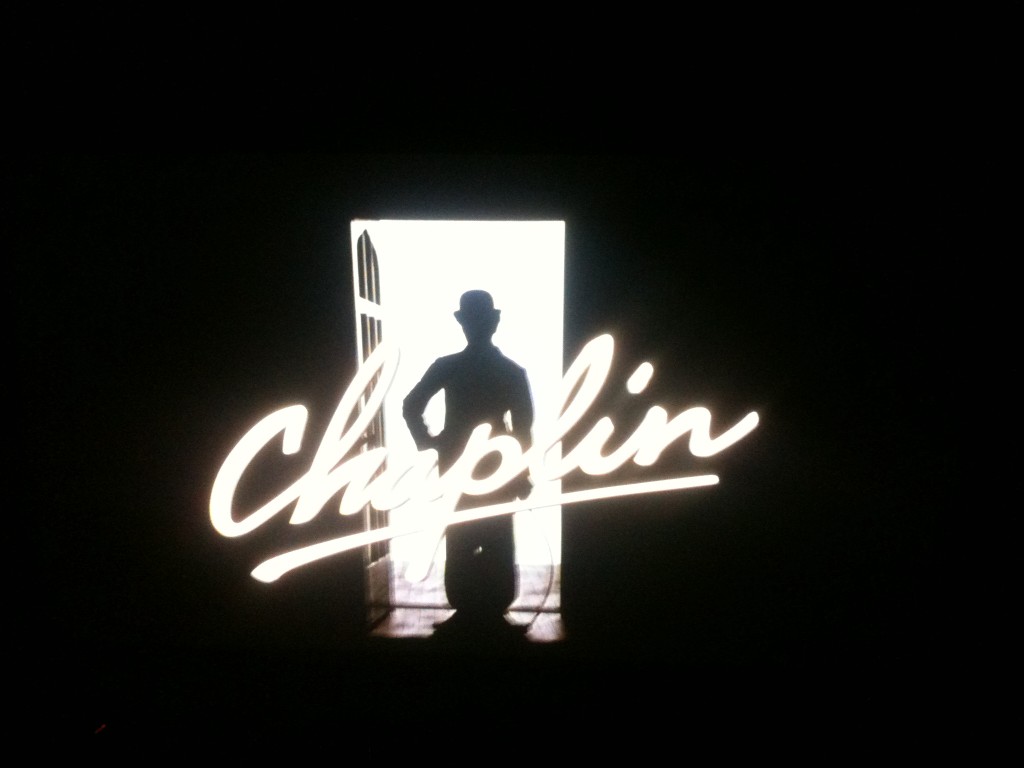
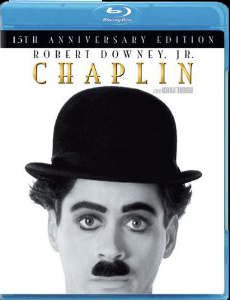
BUY FROM AMAZON: CLICK HERE!
STUDIO: Lions Gate
MSRP: $19.99
RATED: PG-13
RUNNING TIME: 135 miniutes
SPECIAL FEATURES:
• “All at Sea” home movie of Chaplin
• “Strolling into the Sunset” featurette with Richard Attenborough
• “Chaplin the Hero” featurette
• “The Most Famous Man in the World” featurette
• Trailers
The Pitch
Like Gandhi, but about Charlie Chaplin
The Humans
Starring Robert Downey, Jr., Kevin Kline, Dan Aykroyd, Geraldine Chaplin, Paul Rhys, Moira Kelly, Anthony Hopkins, many more
Story by Diana Hawkins Screenplay by William Boyd, Bryan Forbes, William Goldman
Directed by Richard Attenborough
The Nutshell
After an aging Charlie Chaplin (Downey Jr.) writes his autobiography from his home in Switzerland, his editor (Hopkins) comes over to go over some of the major events and themes that he finds need a bit more explaining. Thus is the framework for the life story of Charles Spencer Chaplin, who grew up with a certifiable mother (Chaplin) in late-1890s England with his brother Syd (Rhys), and quickly found fame and fortune first in vaudeville and then in silent pictures in Hollywood. However, along with this celebrity came the high-profile divorces that plagued much of his life as he tried to balance his love for young women and his career — as well as the constant allegations that he was a communist by J. Edgar Hoover.
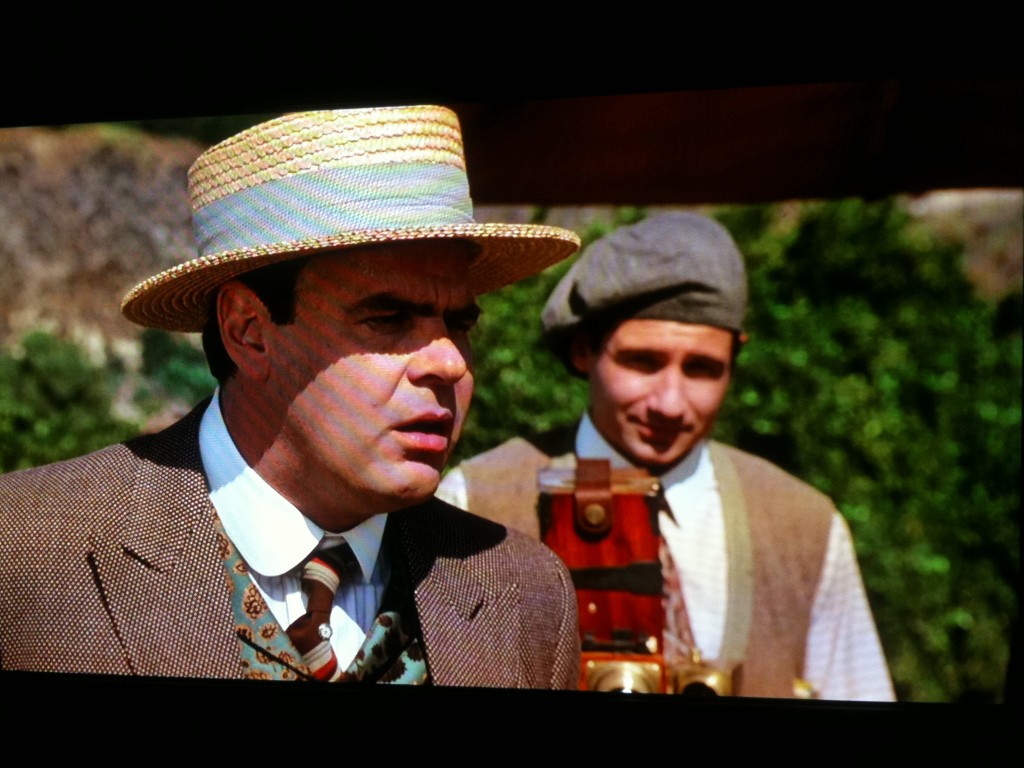
“Seriously? The guys from The Office? You have got to be fucking with me.”
The Lowdown
Biopics can be cheap imitations of the real thing, with actors slipping too far toward mimicry rather than full embodiment of the actual people being portrayed. Other times the performers themselves are just too recognizable on their own that they can never truly separate their own personal selves from the characters they’re playing on-screen, and when that character is also a real person, it ends up being a mess. Sometimes, though, biopics just work. And Chaplin is one of those.
Admittedly, Chaplin takes some work on the part of the viewer to get into. The opening is a bit of a mess, jumping around from Chaplin as a toddler performing on stage after his mother bombs miserably to a heckling audience, to Chaplin as a teenager taking his mother to an asylum, to Chaplin’s brother, Syd, getting him a job as a performer, all while being seemingly narrated by both a narrator and Chaplin himself as an old man. Once the framing device is revealed, the narration makes sense of the story’s time-schizophrenic nature: Chaplin’s editor sits down with Chaplin to go over elements of Chaplin’s already-written autobiography that need clarifying. This makes it more understandable that it would be skipping over moments frequently. Unfortunately for the viewer, unlike for the editor, we’ve yet to know those parts in between that we’re missing so it takes us a little longer to get caught up to speed with everything and get fully engaged. And, thankfully the two child actors who portray young and younger Chaplin don’t spend too much time on screen and director Attenborough gets us Robert Downey, Jr. to fill most of the subsequent frames of the two-hour-plus long movie.
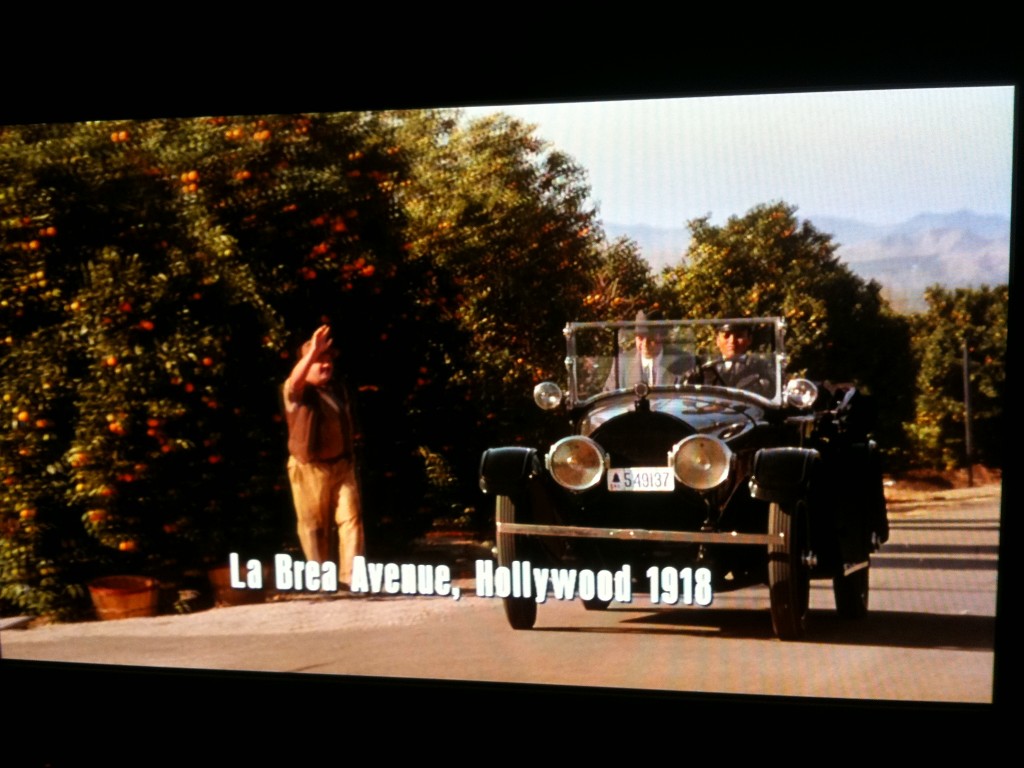
Amazing to see how little has changed over the years…
And that’s what makes this film truly work. Downey Jr. manages to embody the character of Chaplin without it becoming just some act, some bit where he pretends to be him. Attenborough mentions in one of the included featurettes that he couldn’t get funding for the film until someone was attached to play Chaplin. There were plenty of actors clamoring for the role, but none quite worked until Downey Jr. came in; and it was his ability to just lose himself in the role that must’ve separated himself from the others. It’s interesting to look back on this movie now with the knowledge that Downey Jr. has gone on to become a bona fide, A-list action movie star, considering that at the time that Chaplin was made, he was predominantly still doing comedies and wasn’t all that far removed from playing high school geeks. Likely, the fact that he wasn’t yet a true movie star, allowed two things: one, he had yet to showcase his massive talent; and two, people could let him lose himself in the performance. It’s the latter that tends to trip up other biopics, like Man on the Moon — Jim Carrey was just too huge a star, already established in his own right, that audiences couldn’t truly accept him being someone else, even if he did a bang-up job.
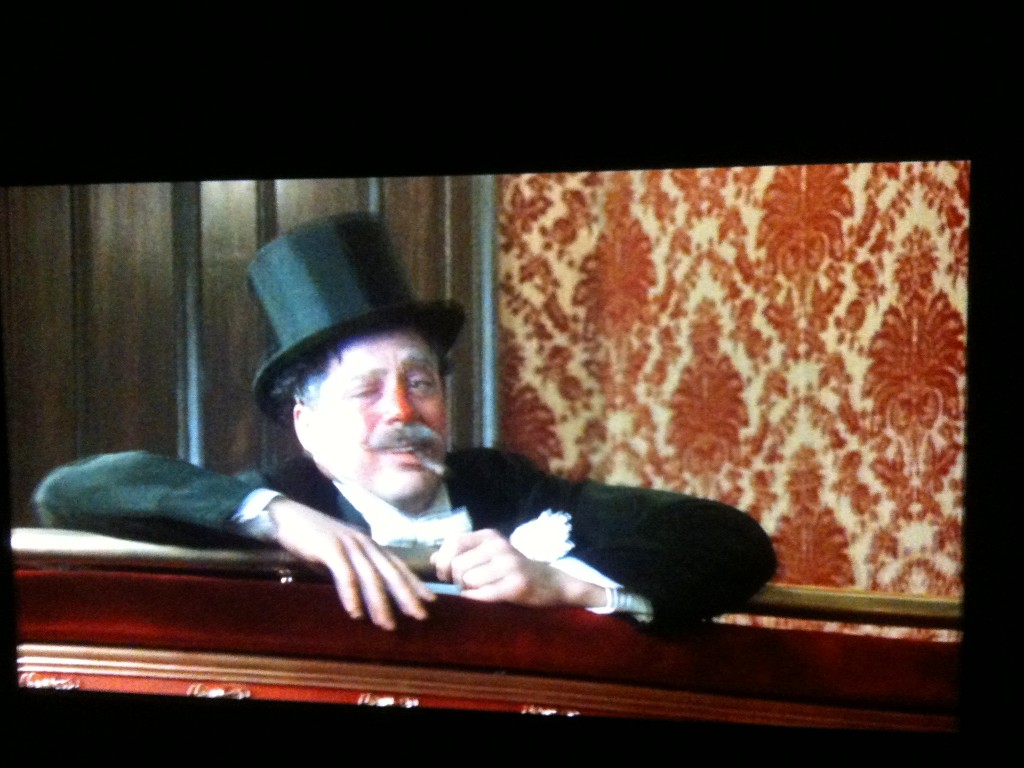
Charlie proved that being hammered and belligerent gets you famous. Enter Jersey Shore stage left.
It also helped that while there were a handful of scenes where Downey Jr. had to perform physical comedy flawlessly to properly portray Chaplin as he made a name for himself as The Tramp for Mack Sennet in Hollywood, much of the film involved Chaplin’s life behind the scenes, as the sad, tormented artist he was most of the time. This meant that Downey Jr. didn’t have to constantly mimic Chaplin’s unique, game-changing abilities in order to make us believe that he was actually Chaplin. A genius move on the parts of Attenborough and the writers, since that would be just asking too much, even from a performer like Downey Jr. That said, the scenes in the first half of the film that show a young Chaplin getting hired to star in the newly developed word of moving pictures, showcasing just what a stunning talent he was, were the most enjoyable. And being a film buff, there’s something magical about seeing the birth of modern-day cinema, with hand-cranked cameras, cutting actual film stock and taping it back together, and developing the language of movies that we still watch today. We see this new world through the eyes of Chaplin, who is as completely in awe and enamored with the medium as we are.

Caveman Charlie was always a hit with the ladies at the Sigma Chi Halloween party.
Naturally, things have to take a turn for the worse, as is usually the case with life. Despite monumental success, Chaplin’s love life was consistently in tatters. It got off on the wrong foot from the get-go, when he fell in love and proposed to a then-16-year-old Hatty (Kelly) when he was himself only 21 back in England, to which she declined. They hadn’t even shared so much as a kiss then, but his love for her left quite the mark on him. So much so that, to reinforce this, Attenborough made the choice of casting the same actress – Moira Kelly – as both Hatty and his future – and final – wife, Oona, later on in the movie. (She, too, was merely a teenager despite he being well into his 50s.) Many of the conversations between the editor and Charlie in the second half of Chaplin involve his questioning of how, as written, people may not quite understand Charlie’s relationships with such young, in many cases underage, women to which he doesn’t really have an answer. Maybe it’s softened since even as Charlie ages in the film and becomes gray quite early on, he always has a boyish quality to him, perhaps due to his short stature. While it’s creepy that he’s got a bit of a Jerry Lee Lewis thing going on for his women, it’s portrayed more as a bad choice (because almost all end up ending badly) because no matter who he’s seeing, she’s always taking distant second to his filmmaking.
Chaplin ends up being the tale of a tortured artist, one who rose to fame by being a clown, by making millions of people happy. While I didn’t like the fabricated framing device at first (the whole scenario with the editor was pure fiction), it ended up surprising me by adding a solid layer of drama and story that benefited the film as it went on. As opposed to having an omnipotent narrator, or just having Chaplin himself, on his own narrating, this took away the sense of the biased storyteller skewing things one way or another. Instead, the editor did just what his profession suggests: he edited things along the way, providing a more balanced telling of the up-and-down life of one of the most influential filmmakers of all time.

Nothing beats the three-pronged epee. Except for when that clarinetist tackles Ray out of left field.
The Package
The Blu-ray looks good, although the film itself looks a bit dated. It’s not crisp, even though the transfer is fine. It just feels like an early-90s movie, which isn’t good or bad, necessarily. It’s just even more apparent in Blu-ray. The few featurettes are a nice compliment.
Rating: 




Out of a Possible 5 Stars
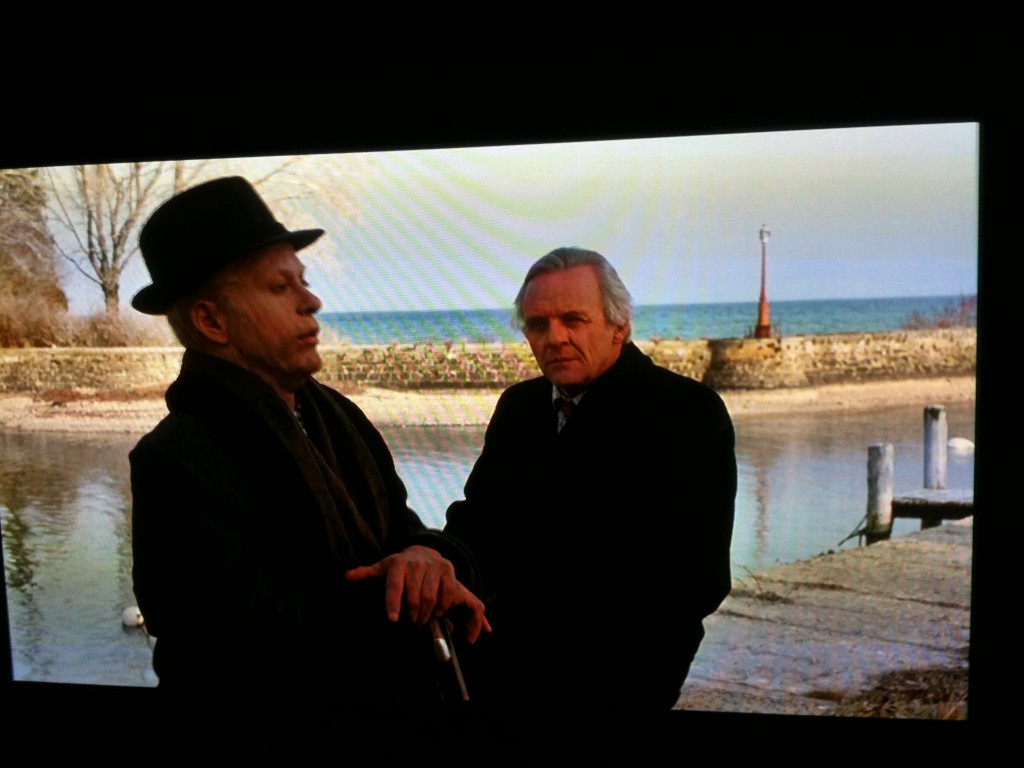
Sneak peek at Hannibal 2: Hannibal and Mason Verger Go Fishing